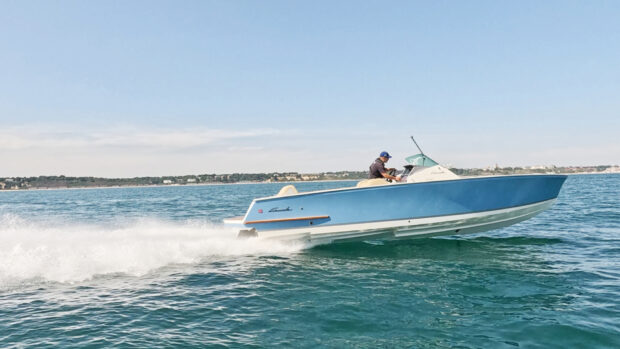Our resident boating instructor Jon Mendez explains how to set up a boat trailer properly...
Keeping your boat on a towable road trailer allows you to explore destinations well away from your local boating area. It can also save you a small fortune on berthing fees provided you have somewhere sensible to store it.
We’ve already covered off how to launch a boat from a trailer and how to recover a boat onto a trailer, that just leaves the small matter of getting it to and from your chosen launch site.
In the UK, if you passed your driving test before January 1997, you are usually allowed to drive a vehicle and boat/trailer with a combined weight of up to 8,250kg. For licences issued after that date it is the weight of the boat and trailer that matter, in this case a MAM (Maximum Authorised Mass) of 3,500kg.
In both cases this is also dependent on the legally authorised towing weight of the vehicle. This is usually displayed in the handbook and/or on a sticker under the bonnet or in the passenger compartment.
Other countries may have different rules so check local regulations. As well as the very real safety risks of exceeding this, the financial penalties can also be draconian – in the UK, fines tend to be based on a scale of £2 for every 1lb overweight.
Article continues below…

How to launch a boat from a trailer

How to recover a boat on a trailer: Jon Mendez’s expert guide
The key to staying on the right side of the law is knowing what your rig weighs, not just the stated weight from the manufacturer but what you have added in terms of kit, lines, fenders and anchors. It all adds up. Fuel and water are also important considerations.
If in doubt the local weighbridge is usually happy to assist, giving you an accurate figure for the whole lot. Nose weight (the static weight placed on the tow bar by the trailer hitch) is another important figure. You should be looking for a downward pressure of around 50–75kg (the exact figure will be in your car’s handbook and the trailer manual).
Too little nose weight and the trailer will want to lift the rear of the car over bumps, making it highly unstable. Too much and the trailer will be pushing down on the rear of the car, reducing weight on the front wheels and adversely affecting both steering and braking.
To check yours, winch your boat fully against the winch post, then place the trailer’s jockey wheel on a set of scales. If it needs adjusting it can be done in two ways. If the nose weight is too light, the easiest solution is to move the winch post forward a couple of inches then winch the boat up to meet it.
If the post is already as far forward as it can go then you will need to move the axle(s) further back. If the nose weight is too heavy, move the winch post further back or bring the axles forward. A movement of as little as 5cm can dramatically change how much weight is on the coupling.
The next job is to ensure the boat is securely tied down with straps. These must be in good condition, with a weight rating of at least double the boat’s weight. I like to use plenty of these.
First, I make sure the boat is winched hard up against the post. Next, I add either a pair or one long strap from a strong point on the trailer around 2m aft of the winch post, up through the bow eye and back down to a point the same distance behind on the other side, pulled tight.
Then I add two aft ones from the eye bolts on either side of the boat’s transom to a point 2m forward on the trailer. Once pulled really tight, these stop the boat trying to move.
Lastly, fit your light board and extend it as far back as possible, check all the lights are working and the number plate matches the tow vehicle’s. Then put something bright on
the rearmost part of the boat or trailer – we used a bright red prop bag.
First published in the August 2023 issue of MBY.










